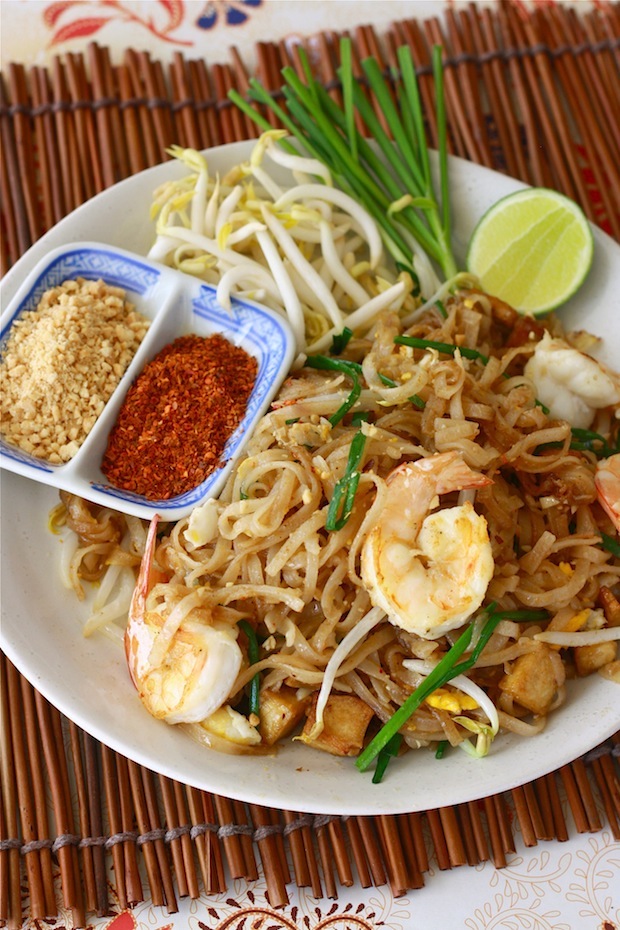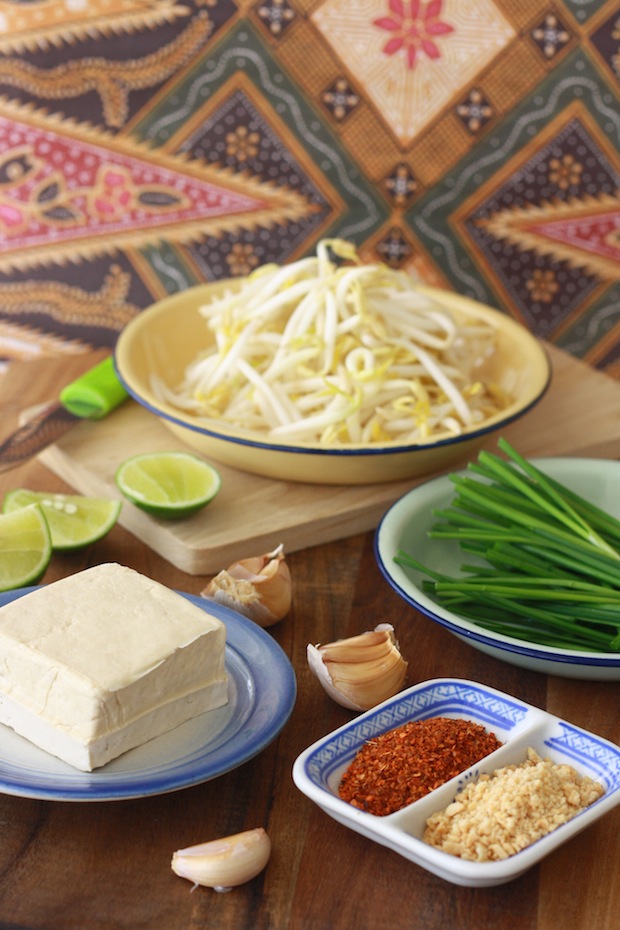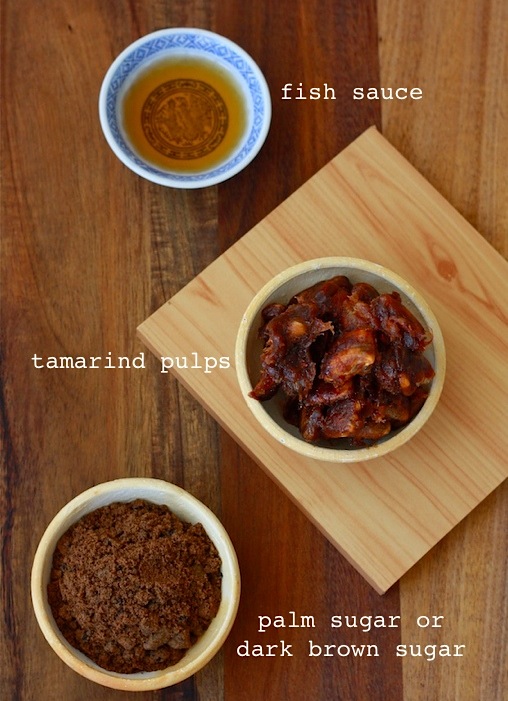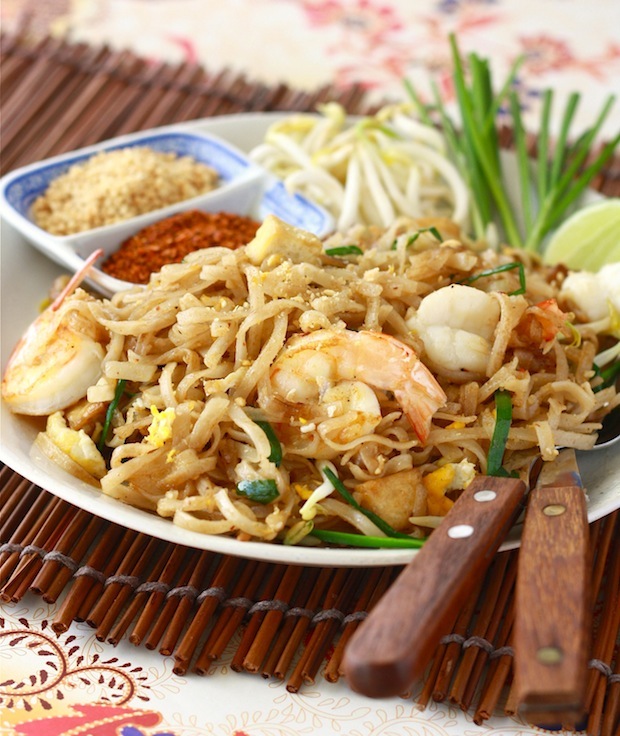What’s the secret to many of those steamy, spicy, tantalizing, iconic street foods of Southeast Asia?
Lots of salt and oil. Yes, that’s true. But probably not a secret, especially if you have ever watched a hawker with a bottle of palm oil in one hand, cooking over a wok at a roadside stall.
The real secret is that many of the iconic dishes we associate with a specific Southeast Asian country are actually fusion dishes. China, India, the Middle East, Europe – they have all played a significant role in influencing, and often transforming, the cuisines of the region.
Take for example, the famous stir-fried noodle dish of Thailand – Pad Thai.
Take for example, the famous stir-fried noodle dish of Thailand – Pad Thai.

Pad Thai basically translates to “Thai-style stir-fried rice noodles”. That immediately brings up a question – Why would Thai cooks, in Thailand, refer to a local noodle dish as Thai-style? Wouldn’t Thai-style be a given?*
As famous as Pad Thai has become – now considered one of the iconic dishes of Thai cuisine – the name itself alludes to a foreign influence.
That becomes even more apparent with the last two terms in the name – stir-fried & rice noodles. A technique of cooking and an ingredient that both originated in China.
Chinese merchants and traders had a long history in exploring and settling throughout the Southeast Asian region. But it wasn’t until the 18th century – when European colonialism was at its peak – that waves of Chinese laborers migrated from the provinces of southern China to Southeast Asia. This mass migration led to a time of unprecedented cross-culturalism in the region. Cross-culturalism with delicious, iconic outcomes.
In Malaysia, Chinese laborers stir-fried rice noodles with bean sprouts, garlic chives, light and dark soy sauce, Chinese sausage, lard, and eggs. Then incorporated local ingredients – like prawns, cockles, belacan (fermented shrimp paste) and red chilies – to create a dish called Char Koay Teow. A fusion dish of Chinese and Malay cuisines, that is now famous at hawker stalls in Penang.
Pad Thai shares the same history. When Chinese immigrated to Thailand, they included many favorite Thai ingredients into their stir-fried noodle dishes, such as prawns, red chilies, palm sugar, fish sauce, and tamarind.
The base seasonings of tamarind, palm sugar, and fish sauce are a stark contrast to the usual soy sauce based stir-fries of Chinese cuisine. The tamarind adds that tart and tangy element to the noodles; the palm sugar lends a rich, sweet taste; and the fish sauce intensifies the overall flavor with its pungent saltiness.
So even though Pad Thai is a fusion of Chinese and Thai cuisines, that distinct Southeast Asian flavor will always place the origin of the dish to its home of Thailand.
Ready to cook up an authentic, delectable plate of Pad Thai? Here are some tips to get you started:
- Cooking Oil. Like most street food, you want to be generous with the use of oil. Not drowning in oil, but more than you usually add. The perfect plate of noodles should be moist, but not laden with grease. Have your oil nearby as you stir-fry, so you can quickly add in to prevent the noodles from drying up and sticking together.
- Heat. You want that wok-charred flavor without burning the noodles, so it’s important to control the heat. Start with high heat and make sure the entire wok is hot. Lower the heat when it becomes too smoky, but crank the fire back up on once it stabilizes. The key is to keep the wok hot at all times!
- Portion Size. As everything is cooked at lightning speed, cook a maximum of one or two portions in the wok at a time, so all the ingredients get in contact with the heat evenly and quickly.
- Stirring. For best results when stir-frying, you need to keep the ingredients moving in the wok. Stir swiftly to prevent the noodles from lumping together and burning, and to ensure all ingredients get cooked evenly. But at intervals, gently press the noodles to the wok just for a moment to achieve that smoky charred flavor that makes street food so delicious.
- Practice Makes Perfect. Mastering stir-fried noodle dishes may take a few rounds, but you’ll get the hang of it. And then whenever you crave that street food style Pad Thai, you can whip up a batch right in your own kitchen.
Shrimp Pad Thai recipe by Season with Spice
Serves 2-3
Ingredients:
Two servings of Thai rice stick noodles
5 tbsp cooking oil
4 cloves garlic - chopped finely
1 cake of pressed bean curd (extra firm tofu) – sliced into bite-sized cubes
10-12 medium-sized fresh shrimp – deveined and de-shelled with tails intact
1 tsp of dried red chili flakes
2 eggs
1 cup of bean sprouts – remove tails
A handful of garlic chive stalks (also called Chinese chives, or Bai Gui-chai in Thai) – cut into 2-inch length pieces
Finely ground white pepper to taste
Pad Thai seasoning sauce:
3 tbsp tamarind pulps – soaked in 1/3 cup of warm water for 15 minutes, then strained to separate the seeds and fibers from the juice
2 tbsp of dark brown sugar
2 tbsp fish sauce
Condiments and garnishes (serve according to your preference)
Lime wedges
Crushed peanuts
Garlic chives
Fresh bean sprouts
Dried red chili flakes
Method:
1. Soak the rice stick noodles in warm water for about 15 minutes, then drain. Set aside.
2. Mix the sauce ingredients in a bowl. Set aside.
3. Heat 3 tbsp of oil in a wok or frying pan. Once oil is hot, add in the bean curd pieces and stir-fry until they are crisp and lightly brown. Should take about 5 minutes. Set tofu aside.
4. In the same work or pan, add in garlic and stir-fry over medium heat for a minute or until fragrant. Add in the noodles. Pour the sauce and dried red chili flakes over the noodles. Turn the fire back up and stir quickly to keep the noodles from sticking. Add a little bit of water if the noodles are still hard. Add in the shrimp and the cooked tofu. Continue to stir-fry over high heat for one or two minutes, adding more oil if necessary.
5. When the shrimp is almost cooked, push all the ingredients to one side of the wok. Then add in two more tablespoons of oil on the other side and crack the two eggs onto the oil. Let the eggs cook for about 15 seconds before thoroughly mixing them into the noodles.
6. Toss in the bean sprouts and garlic chives. Stir them into the noodles, and stir-fry for another 30 seconds. Turn fire off and add in white pepper.
7. Dish out and serve with condiments and garnishes.
Notes:
- Garlic chives, also called Chinese chives, are generally used in stir-fried noodle dishes like Pad Thai in Thailand and Char Koay Teow in Malaysia. Garlic chives have a much sharper taste than regular chives. If you can’t find garlic chives, you can try substituting them with regular chives or with scallions.
- If cooking Pad Thai for the family or for a party, remember to stir-fry a maximum of two servings at a time.
Serves 2-3
Ingredients:
Two servings of Thai rice stick noodles
5 tbsp cooking oil
4 cloves garlic - chopped finely
1 cake of pressed bean curd (extra firm tofu) – sliced into bite-sized cubes
10-12 medium-sized fresh shrimp – deveined and de-shelled with tails intact
1 tsp of dried red chili flakes
2 eggs
1 cup of bean sprouts – remove tails
A handful of garlic chive stalks (also called Chinese chives, or Bai Gui-chai in Thai) – cut into 2-inch length pieces
Finely ground white pepper to taste
Pad Thai seasoning sauce:
3 tbsp tamarind pulps – soaked in 1/3 cup of warm water for 15 minutes, then strained to separate the seeds and fibers from the juice
2 tbsp of dark brown sugar
2 tbsp fish sauce
Condiments and garnishes (serve according to your preference)
Lime wedges
Crushed peanuts
Garlic chives
Fresh bean sprouts
Dried red chili flakes
Method:
1. Soak the rice stick noodles in warm water for about 15 minutes, then drain. Set aside.
2. Mix the sauce ingredients in a bowl. Set aside.
3. Heat 3 tbsp of oil in a wok or frying pan. Once oil is hot, add in the bean curd pieces and stir-fry until they are crisp and lightly brown. Should take about 5 minutes. Set tofu aside.
4. In the same work or pan, add in garlic and stir-fry over medium heat for a minute or until fragrant. Add in the noodles. Pour the sauce and dried red chili flakes over the noodles. Turn the fire back up and stir quickly to keep the noodles from sticking. Add a little bit of water if the noodles are still hard. Add in the shrimp and the cooked tofu. Continue to stir-fry over high heat for one or two minutes, adding more oil if necessary.
5. When the shrimp is almost cooked, push all the ingredients to one side of the wok. Then add in two more tablespoons of oil on the other side and crack the two eggs onto the oil. Let the eggs cook for about 15 seconds before thoroughly mixing them into the noodles.
6. Toss in the bean sprouts and garlic chives. Stir them into the noodles, and stir-fry for another 30 seconds. Turn fire off and add in white pepper.
7. Dish out and serve with condiments and garnishes.
Notes:
- Garlic chives, also called Chinese chives, are generally used in stir-fried noodle dishes like Pad Thai in Thailand and Char Koay Teow in Malaysia. Garlic chives have a much sharper taste than regular chives. If you can’t find garlic chives, you can try substituting them with regular chives or with scallions.
- If cooking Pad Thai for the family or for a party, remember to stir-fry a maximum of two servings at a time.

*Source:“Thai Food & Travel Blog”









